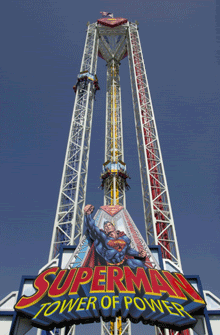
Girl's feet severed on ride
http://www.imedinews.ge/en/news_read/47353
LOUISVILLE, Ky., June 22 (UPI) — A 13-year-old girl's feet were severed as she rode the 177-foot-tall Superman Tower of Power ride at a Kentucky amusement park.
Officials from the Kentucky Department of Agriculture Office of Consumer and Environmental Protection went to the Six Flags Kentucky Kingdom after the 4:45 p.m. Thursday accident, park spokeswoman Carolyn McLean told the Louisville (Ky.) Courier-Journal. The agency inspects amusement park rides.
A Six Flags spokeswoman told the newspaper it wasn't immediately clear at what point in the ride the girl's feet were severed.
The ride was shut down and would remain closed until the investigation is complete, McClain said. Visitors to the park said they were told the ride was closed because it was broken.
They should at least tell you if someone got hurt on it, Josh Mullins, 17, told the Courier-Journal.
The ride, which used to be called The Hellevator, carries passengers in open-air seats up 177 feet and then drops them 157 feet at 54 mph before stopping 20 feet above the ground, the park's Web site said, the newspaper reported. A California boy died on a similar ride in 1999 when his harness opened.
Kentucky Kingdom SuperMan
Zoom through a 23-story plunge at speeds over 60 mph. Superman: Tower of Power is an extreme free-fall ride that carries you to the top of the 230-foot tower, giving you a bird's-eye view of the park. Then, after a few seconds of gut-wrenching anticipation, you plunge down at over 60 mph.
http://www.sixflags.com/stLouis/rides/SupermanTowerofPower.aspx
Sit in ski-lift-style chairs that face outward—your feet dangle in the air
Get ready for a harrowing 23-story plunge at over 60 mph.
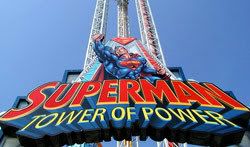

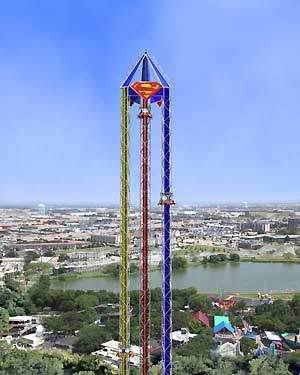
Girl's feet severed at amusement park
http://www.dailypressandargus.com/apps/pbcs.dll/article?AID=/20070622/NEWS01/70622017
A 13-year-old girl's feet were severed above her ankles yesterday while on a popular ride at Six Flags Kentucky Kingdom, a park official said.
The accident happened around 4:45 p.m. on the Superman Tower of Power, said park spokeswoman Carolyn McLean.
The girl's name was not released because she is a minor, McLean said. She did not know where the girl was from.
The girl was initially being treated at University Hospital, but her condition was not available last night. McLean said the girl was in surgery the last time she checked on her.
The ride takes passengers straight up 177 feet in open-air seats -- securing them with bars and seat belts with arms and legs free -- then drops them 157 feet at 54 mph before stopping 20 feet above the ground, according to the park's Web site.
Wendy Goldberg, a spokeswoman for Six Flags, said it was not immediately clear at what point in the ride the girl was injured.
The ride was shut down and will remain closed until an investigation is complete, McLean said. She said she knew of no previous problems with the ride.
Part of a broken cable was visible on the ride. Asked about the cable, McLean said "it would be speculation" to say how the ride malfunctioned or whether the cable contributed to the accident.
McLean said representatives from the Kentucky Department of Agriculture Office of Consumer and Environmental Protection came to the park last night to inspect the ride.
The agency inspects all amusement park rides and attractions, according to its Web site. Agency officials could not be reached for comment.
McLean said that because of its prominent location right inside the entrance, the Superman Tower of Power is one of the park's more popular rides. The ride opened in 1995, known then as the "Hellevator."
As patrons left the park early yesterday evening, many said they were aware of the accident, but had not seen it.
A group of teenagers said that when they asked park workers why the ride was closed, they were told it was broken. The rest of the park remained open.
"They should at least tell you if someone got hurt on it," said Josh Mullins, 17.
McLean said workers were not briefed on what happened because the park was more concerned with the girl's safety.
Other visitors, especially parents, said they were worried.
Tara Sperry, who was leaving the park with her four children and three of their friends, said the kids were upset.
"After something like that happens, it takes a little getting over," Sperry said.
A spokesman for the International Association of Amusement Parks and Attractions said the organization doesn't keep safety statistics for individual rides, although operators and state ride-safety agencies do. According to the association, 1,713 injuries occurred on rides in 2005, when more than 300 million park visitors took 1.8 billion rides. Of those, 132 required overnight treatment in a hospital.
In 1999, a 12-year-old boy died on a similar ride in California called the "Drop Zone" when his harness popped open and he fell more than 50 feet.
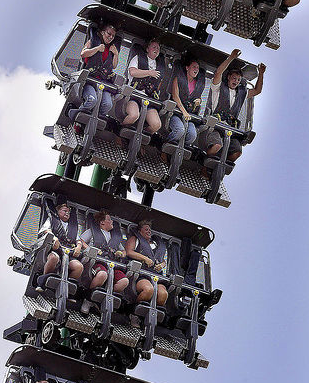
Amusement park accidents often result in serious injury or death to somebody visiting or working at an amusement park.
Most amusement park accidents are required to be reported to regulatory authorities. They usually fall into one of the following categories:
Caused by negligence on the part of the guest. This can be refusal to follow specific ride safety instructions, or deliberate intent to break park rules.
The result of a guest's known or unknown health issues.
Negligence on the part of the park, either by ride operator or maintenance.
Act of God or a generic accident (eg slipping and falling), that is not a direct result of an action on anybody's part.
The U.S. Consumer Product Safety Commission tracks statistics for all amusement ride accidents. These accidents occur at traveling carnivals, on portable inflatable attractions, and on fixed-site amusements such as roller coasters.http://en.wikipedia.org/wiki/Amusement_park_accidents
Saferparks
http://www.saferparks.org/
Amusement Ride Accident Reports and News
http://www.rideaccidents.com/
Accident Watch
http://www.themeparkinsider.com/accidents/
Amusement Safety Organization
http://www.amusementsafety.org
What are the latest statistics on amusement ride injuries?
http://injury-law.freeadvice.com/injury-law/amusement_ride_injury_statistics.htm
The following are statistics taken by the US Consumer Product Safety Commission on amusement park injurieshttp://www.cpsc.gov/LIBRARY/amus2003.pdf and published in 2003:
In 2002, mobile amusement rides accounting for an estimated 3000 injuries treated by the emergency rooms;
· Based on hospitals in the NEISS (National Electronic Injury Surveillance System) for the period 1997-2002, there is no statistically significant trend, positive or negative, for mobile amusement ride injuries over that same period;
· In 2002, inflatable rides, such as inflatable slides and bounces accounted for an estimated 2,500 hospital emergency room trips;
· From 1987 to 2000, for mobile and fixed-site amusement rides combined, there were an estimated 4.5 amusement-ride fatalities per year. At the time of preparing the report, CPSC had reports of 3 amusement ride fatalities in 2003, 2 in 2002 and 3 in 2001.
In an earlier report http://www.cpsc.gov/LIBRARY/Amus2001.pdf, the CPSC also noted the hazard patterns associated with amusement related incidents, such as:
(1) mechanical failures: missing safety pins, broken welds or structural components, exposed electrical wires, malfunctioning lap bars or other safety restraints, failure to shutoff, etc.
(2) operator behavior: abruptly stopping the ride, improperly assembling or maintaining the ride;
(3) consumer behavior: intentionally rocking cars, standing up, defeating safety restraints, sitting improperly, holding child above the safety restraint,
(4) other: rides that injure people while apparently functioning normally, without any unusual behavior on the part of the consumer or operator. For example, eye hemorrhage and
(5) combination: operator suddenly stopping a ride when he heard an unusual thumping sound due to a bent rail.
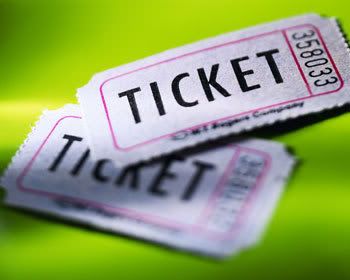
Personal Injury - Amusement Park Accidents
http://injury-law.freeadvice.com/injury-law/amusement_park_ticket_disclaimer.htm
The ticket we purchased from the amusement park had a disclaimer on it. Does this mean we can’t sue for any injuries suffered at the park?
You most likely can still institute a lawsuit for any injuries despite the disclaimer on the amusement park ticket. Most courts do not give much strength to these disclaimers for several reasons. First, very few patrons actually read the disclaimers and make decisions as to whether to enter the park or not based on the disclaimer. Second, disclaimers are written so that the park is, essentially, never liable for anything which simply is not acceptable particularly in a case where the park has been negligent or has not adequately trained its employees. Third, many releases are written somewhat generally. In many states, very specific language and, often, very specific notice requirements (such as type size or color) are required to adequately waive liability. Fourth, it is questionable whether minors, who are not able to form legitimate contracts due to their age, can actually waive their rights to sue – and minors are often the ones who are injured at parks. In other words, don’t let the fact that there was some type of printed waiver on the ticket or a sign or even if you signed some type of release stop you from seeking the advice of competent legal counsel if you or a family member has been seriously injured at an amusement park.
One legal theory that may affect your damage award, depending on the state you are located in, is called assumption of risk. This means that participating in the rides and attractions at an amusement park carry risks that patrons understand, and that when you choose to participate, you choose to assume those risks. This is not a universal concept – while some states will always hold you to an assumption of risk, other states have rejected it entirely and even other states will only let it partially affect any award of damages. Your attorney can explain how assumption of risk is applied in your particular jurisdiction and what it may mean to your case.

Accidents Raise More Questions About Theme Park Rides
http://travel.nytimes.com/2006/03/12/travel/12heads.html
IT was the story of last summer for the more than 300 million annual visitors to America's amusement and theme parks. With report after report about accidents involving rides — one that injured more than a dozen people at the California Screamin' roller coaster at Disney's California Adventure in July, another that left a family of five injured at a flume ride at the Steel Pier in Atlantic City in June — visitors began questioning whether their safety was being taken for granted.
Now, some lawmakers are asking the same thing.
In recent months, a number of state and federal legislators as well as consumer advocates have started to look into whether new safety regulations — or strengthening of existing ones — are needed. "It's one of the few industries in the United States that has an exemption from the consumer-product safety laws. It doesn't deserve that," said David Moulton, an aide to Representative Ed Markey, the Democrat of Massachusetts who has increased his call for federal oversight. In 1999, Mr. Markey first proposed such regulation in a national amusement park safety bill after the deaths of four people on roller coasters.
As the industry gears up for what could be another busy summer, the issue doesn't appear to be going away. Already, there have been a number of serious events this year: in February, a 70-year-old man was injured boarding Peter Pan's Flight at Disney World's Magic Kingdom. Later in the month, a 13-year-old boy was injured when he fell from a roller coaster at the Cypress Gardens park, also in Central Florida.
But while officials and consumer advocates are quick to note such events as they make their legislative case, the industry says its safety record speaks for itself. Beth Robertson, a spokeswoman for the International Association of Amusement Parks and Attractions, says there have been just two rider deaths a year on average over the last two decades — meaning there is a one in 790 million chance of being fatally injured, based on ridership figures.
Others, including Kathy Fackler, a computer programmer from La Jolla, Calif., whose son's foot was crushed at a Disneyland ride in 1998 — say the association doesn't have a detailed system for reporting accidents.
Still, when an event does occur, it's often because the rider has taken a risk by, say, not remaining seated or because the rider has a pre-existing medical condition. Last June, for example, a 4-year-old child died on Mission: Space at Walt Disney World's Epcot Center. For all the attention that was focused on the attraction, which simulates the G-forces involved in space travel, it was determined that an undiagnosed heart condition had caused the child's death.
But such cases, critics say, don't change the real problem: an industry that's shielded by a regulatory system that imposes no national standards. While traveling carnivals are overseen by the federal Consumer Product Safety Commission, amusement (or "fixed site") parks are exempt from such oversight under a 1981 act that was lobbied for by the industry. Mr. Markey's office calls it the "roller coaster loophole."
On the state level, regulation varies widely. Some states — notably California and Massachusetts — have strict rules requiring that every ride at every amusement park and carnival be inspected regularly. A few states have virtually no regulations. And others have found a middle ground. In Florida, for example, carnival rides are subject to state inspection, but rides at the state's largest theme parks are self-inspected.
To advocates like Ms. Fackler, such a patchwork system is an accident waiting to happen. She argues that without federal oversight, there's no real accountability or perspective. Smaller states are often not able to afford a "robust investigation or inspection program," Ms. Fackler said, and bigger states have no central database to alert regulators to potentially troublesome rides elsewhere in the country.
"Imagine if we required every state to come up with its own airplane crash team. That's what we have here," said Ms. Fackler, who heads the nonprofit group Saferparks.
But the industry argues that amusement park rides are highly customized — what you see at Disney, you won't see at Universal. Some industry officials like Dave Collins, a ride inspector based in California, say such attractions are in a different category from carnival rides and may be beyond the grasp of a federal overseer.
Donn Walker, a Disney spokesman, put it this way: "We are not convinced that another layer of regulation from Washington is the best answer. We have not seen anything proposed that would improve the safety of our parks."
But if federal legislation has not gone beyond the discussion stage (Mr. Markey's bill hasn't made it to the House floor), several states are addressing the issue. In the last year, Tennessee has passed legislation, Arizona is looking into regulations, and Massachusetts has bolstered existing standards.
The states' approaches vary widely. In Massachusetts, regulations cover everything from requiring that maintenance and repair records be kept for each ride to requiring that criminal background checks be performed on park and carnival employees. But in Tennessee, new legislation doesn't even call for state inspections. Instead, it requires ride operators to show proof of inspection, which is often done by their insurance companies, and to carry at least $1 million in liability insurance.
While some critics might contend that Tennessee's regulations aren't strict enough, Richard Montgomery, a Republican state representative, said it's a solid start. "We don't want to overreact," said Mr. Montgomery, who pressed for the law after the 2004 death of a woman on a ride at a park in his district.
In Florida, State Senator Steve Geller, a Democrat from Hallandale who was behind the 1988 safety rules that are still in effect, said it comes down to partisan politics. He said he doesn't believe he can make the case for more oversight with a Republican-led state house and senate that he sees as antiregulatory. It was difficult enough to pass the original legislation, Mr. Geller said, because Republicans insisted the industry could regulate itself, especially if the consequences of failing to do so meant losing business.
"Their attitude is if enough people get killed," Mr. Geller said, "people will stop going on rides."
But Florida State Representative Paige Kreegel, Republican of Punta Gorda, Fla., says that he's open to revisiting the issue. "If kids are dying on rides, we need to take a look at that," he said.
One state is taking a different approach. In South Carolina, which performs annual ride inspections, the focus is on park patrons. The Rider Safety Act, which went into effect on Jan. 1, requires that riders follow posted safety rules or face a misdemeanor charge. The goal, said State Representative Alan D. Clemmons, Republican of Myrtle Beach and a sponsor of the measure, is to not only limit frivolous lawsuits, but also to send the message that thrill rides are thrilling for a reason — and patrons can't ignore the risks. "When one decides to ride a roller coaster," Mr. Clemmons said, "there's inherently more risk to that than walking on the beach."

Dayton amusement park accident injures three children
http://www.pal-item.com/apps/pbcs.dll/article?AID=/20070527/UPDATES/70527005
CEDAR POINT, Ohio (AP) — At least three children were hurt in a Dayton amusement park ride, and three people were injured in a roller-coaster accident at Cedar Point, officials said.
A kids’ ride at RiverBlast in Dayton jolted forward Saturday night as children were exiting, dragging some of the children along in a circle until the ride was shut off, witnesses said.
A 6-year-old girl and a 10-year-old girl were taken by ambulance to Children’s Medical Center of Dayton, where they were treated for cuts and abrasions.
Tasha Strickland, a cousin of the two girls, said there were about 12 children on the ride.
“I don’t see how some kids didn’t get hurt worse,” she said.
Other parents drove their children to the hospital. Andrietta Bearfield, speaking as she arrived at the medical center with her 1-year-old, called the situation at the park “chaotic.”
The Cedar Point accident happened on the Magnum XL-200 roller coaster at about 11 a.m. on Saturday, when one train failed to stop at a braking area and struck another train waiting in the holding area, the amusement park company said.
The train was traveling less than 10 mph when it hit the second train, the company said.

Girl, 11, dies at Kitchener wave pool
http://www.theglobeandmail.com/servlet/story/LAC.20070621.DROWN21/TPStory/TPNational/Ontario/
The lifeless body of an 11-year-old girl was pulled from a wave pool yesterday at a Kitchener, Ont., amusement park where several schools were on an end-of-year field trip.
Waterloo police said paramedics and firefighters were called to Bingemans Park about 12:30 p.m. for a medical emergency.
"She was pulled from the water by lifeguards and emergency crews tried to resuscitate her poolside," Staff Sergeant Marion Morrison said.
The Brantford girl, whose identity was being withheld last night, was pronounced dead at Grand River Hospital. Her mother was a volunteer parent on the field trip.
Goran Rosic, 45, was at the park to visit his 11-year-old son, who was also on a trip with his class and was in the pool at the time.
Mr. Rosic said he saw several fire trucks and ambulances arriving with their sirens on, while children were running out of the outdoor pool area. He could see a young girl lying on the ground beside the pool.
"One fireman, the truck was still moving, and he jumped out before it stopped," he said. "He started running to the girl and gave her CPR. ... They really tried hard to save that girl."
He said his son told him the girl had been hit by another student.
A spokeswoman for the Brant Haldimand Norfolk Catholic District School Board said last night that it was unclear whether the death "was an accident or the result of natural causes." Rebecca Taylor said the girl did have an existing medical condition, but that a postmortem examination was scheduled for today.
The children in her class were taken back to the school - "they did not know she had died," Ms. Taylor said, adding that crisis counsellors would be at the school today.
In 2005, a 13-year-old girl was found at the bottom of a public wave pool in Richmond Hill, Ont. It was later determined that the girl had a heart condition since birth.
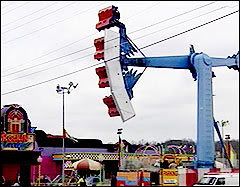
Amusement park manager found guilty of reckless homicide
http://www.cnn.com/2005/LAW/05/17/ctv.martin/index.html
Jury opts for lesser charge over death of woman on ride
SEVIERVILLE, Tennessee (Court TV) -- A jury took less than an hour Monday to convict a former amusement park manager of reckless homicide for a woman's fatal fall from a pendulum-like ride, The Hawk, in March 2004.
After four days of testimony from 26 witnesses, the panel of nine men and three women opted not to convict Charles Stanley Martin of second-degree murder for the death of June Alexander, who fell 60 feet to her death from a ride after her harness came loose in midair as her family watched.
Martin, 57, faced up to 25 years for the murder charge. Sentencing on the lesser charge will be determined by Judge Richard Vance on July 26, but could be up to four years or as little as probation. The jury also levied a maximum $5,000 fine against Martin.
Save for a slight shrug of the shoulders, the former serviceman in the Minutemen Missile Silos offered no reaction to the 8:30 p.m. verdict, similar to his family and the victim's relatives in the audience.
When they left the courtroom, however, Alexander's sisters and daughter burst into tears and consoled each other as they hugged prosecutors and the Pigeon Forge Police Dept.
Alexander, 50, was celebrating her son Cody's 15th birthday at the park on March 14, 2004, when the accident occurred. Cody and her sister, Judy Sprinkles, were aboard the ride, while another sister watched from below.
That sister, Gail Young, reacted tearfully to the verdict Monday.
"I have mixed feelings, but now at least I know my sister's death was not in vain," she said. "This helps make sure no one has to go through the horror that we went through."
Faulty ride
Prosecutors argued that the safety system on The Hawk, which swings higher and higher before turning 360 degrees, had been tampered with, causing the ride to take off even though Alexander's safety harness was not secured.
Jumper cables were found in the system's electrical panel which expert witnesses testified had bypassed the backup safety mechanisms.
The state argued that Martin, as the general manager of the Rockin' Raceway in Pigeon Forge, was the sole staff member with access to the panel and motivation to alter it.
In his testimony, however, Martin insisted that he had never altered the system, nor seen the jumper cables, and that many others had access to the panel.
Several witnesses testified that "Stan was the man" responsible for maintenance on the rides in the park, one of many tourist attractions in the town better known as the home of Dolly Parton and her amusement park, Dollywood.
The specter of the country diva's namesake hung over the trial from the start, when a Dollywood employee was dismissed from jury selection and victim witness coordinator Tina Catlett was identified as one of Dolly Parton's first cousins.
Prosecutors frequently alluded to Martin's struggle to keep his park competitive next to Dollywood, even calling its chief safety inspector, Robert Fox, to compare Dollywood's safety standards for maintaining its rides to those of Rockin' Raceway.
Outside the courtroom, Sevier County District Attorney General Al Schmutzer said he believed the strongest piece of evidence against the defendant was a videotape made by Phil Castellano, a technician for The Hawk's Italian manufacturer, Zamperla.
The video demonstrated the effect of the defective cables, which allowed the ride to take off without the safety harnesses locked in place. Castellano said that if the ride's automatic safety mechanisms were in place, The Hawk never would have begun its deadly ascent.
Defense attorneys attempted to shift the blame to Castellano, alleging he was protecting his company's interests in the faulty ride.
They claimed Castellano knew the ride was unsafe and pointed to defects in the platform and motor which Castellano returned to fix, perhaps giving him the opportunity to install the faulty jumper cables.
The defense also pointed out a "glaring omission" in the prosecution video, which failed to show the ride running as it should under normal circumstances -- with all the safety harnesses securely locked in place and the jumper cables removed.
Sevier County Assistant District Attorney Steve Hawkins said he was pleased with the homicide conviction.
"We put out all the facts to the jury, and from there it was up to them to decide," he said.
Defense lawyers left court without commenting.
Martin remains free on bond until his sentencing.
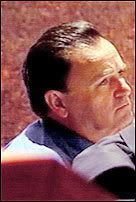
Amusement park manager tried for murder after fatal ride
http://www.courttv.com/trials/martin/051005_background_ctv.html

Roller coasters
The roller coaster (sometimes the term jet coaster is used for roller coasters in Japan) is a popular amusement ride developed for amusement parks and modern theme parks. LaMarcus Adna Thompson patented the first roller coaster on January 20, 1885. In essence a specialised railroad system, a coaster consists of a track that rises designed patterns, sometimes with one or more inversions (the most common being loops) that turn the rider briefly upside down. The track does not necessarily have to be a complete circuit (the antonym of complete circuit is "shuttle"), though some purists insist that it must to be a true coaster. (Not all thrill rides that run on a track are roller coasters). Most coasters have cars for two, four, or six passengers each, in which the passengers sit to travel around the circuit. An entire set of cars hooked together is called a train. Some roller coasters, notably Wild Mouse roller coasters, run with single cars.
Safety
Because roller coasters are intended to feel risky, accidents such as the September 5, 2003 fatality at the seemingly tame Disneyland Big Thunder Mountain Railroad, attract public attention.
Statistically, roller coasters are very safe. The U.S. Consumer Product Safety Commission estimates that 134 park guests required hospitalization in 2001 and that fatalities related to amusement rides average two per year. According to a study commissioned by Six Flags, 319 million people visited parks in 2001. The study concluded that a visitor has a one in one-and-a-half billion chance of being fatally injured, and that the injury rates for children's wagons, golf, and folding lawn chairs are higher than for amusement rides. [4] In fact, driving to the amusement park has a higher risk of injury than riding the rides at the amusement park. It is not unusual for park management to pay higher insurance premiums for carousels than they do for roller coasters.
Many safety systems are implemented within rollercoaster systems. The key to the mechanical fail safes is the control of the coasters operating computers: programmable logic controllers (often called PLCs). Most rollercoasters run with three separate PLCs; however, only one PLC is required to detect a fault for the ride's fail-safes to be activated. This is often the reason that the ride trains may stop on the lift or the brake runs, yet after a short time the ride starts again without any obvious maintenance by staff. It is likely in such a case that one of the PLCs detected a fault by mistake, and the ride's operator only needed to restart the ride.
Nevertheless, accidents do frequently occur[5]. Regulations vary from one authority to another. Thus in the USA, California requires amusement parks to report any ride-related accident that requires an emergency room visit, while Florida exempts parks whose parent companies employ more than 1000 people from having to report any accidents at all. Rep. Ed Markey of Massachusetts has introduced legislation that would give oversight of rides to the Consumer Product Safety Commission (CPSC).
Many ride accidents are caused by riders or ride operators not following safety directions properly, but in extremely rare cases riders can be injured by mechanical failures. One such example was the 2006 de-railing of one car on the Wild Thing roller coaster at Valleyfair!.
In recent years, controversy has arisen about the safety of the increasingly extreme rides. There have been suggestions that these may be subjecting passengers to translational and rotational accelerations that may be capable of causing brain injuries. In 2003 the Brain Injury Association of America concluded in a report that "There is evidence that roller coaster rides pose a health risk to some people some of the time. Equally evident is that the overwhelming majority of riders will suffer no ill effects." [6]
A similar report in 2005 linked roller coasters and other thrill rides with potentially triggering abnormal heart conditions that could lead to death. [7] Autopsies have shown that recent deaths at various Disney parks, Aneuser-Busch parks, and Six Flags parks were due to previously undetected heart ailments.
http://en.wikipedia.org/wiki/Roller_coaster
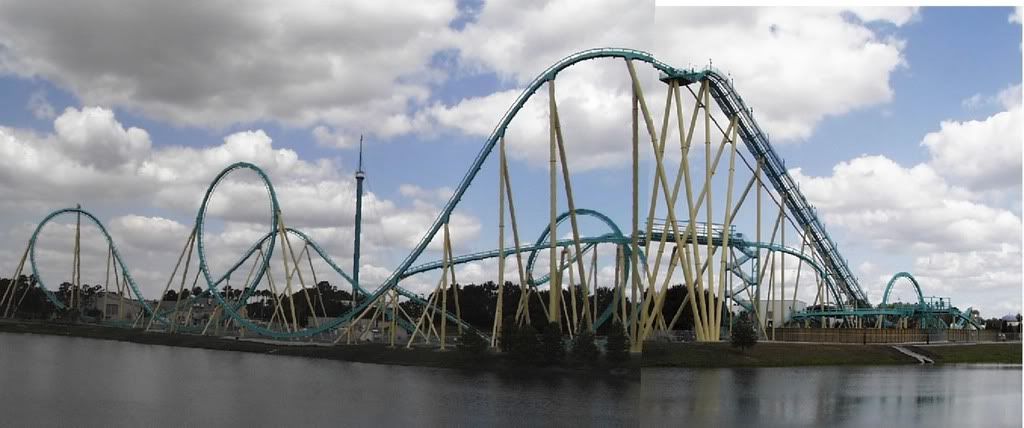
A Short History of Roller Coasters
http://www.themedattraction.com/coaster.htm
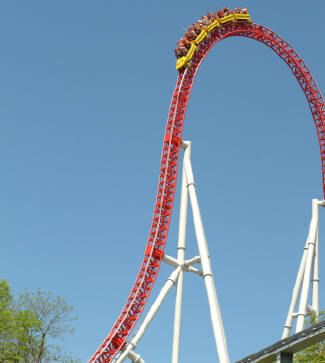
72 roller coasters never checked for axle cracks
http://www.yomiuri.co.jp/dy/national/20070524TDY01004.htm
A total of 119 roller coasters, or 40 percent of all such rides at amusement parks nationwide, have not undergone ultrasonic or magnetic testing on their axles over the past year as required by Japan Industrial Standards, according to findings of a government inspection announced Wednesday.
Of the 119 coasters, 72 had never been checked for axle cracks using ultrasonic or magnetic particles. Some of the coasters had been operating for more than 30 years.
The Construction and Transport Ministry conducted the emergency inspection in the wake of the fatal roller coaster derailment at Expoland amusement park in Suita, Osaka Prefecture, earlier this month.
Moreover, seven roller coasters at five amusement parks were found to have rust, corrosion and cracks on their wheels and axles.
The ministry requested that operators of amusement parks who have not conducted the tests in the past year suspend operations of the roller coasters until they are confirmed safe. It also instructed amusement park operators to repair their deteriorated roller coasters.
A total of 306 rides operating on elevated tracks with a slope of more than 5 degrees at 139 parks are subject to inspection by the ministry. Of these, 256 have completed the inspection while the other 50 are undergoing the process.
According to the inspection results, the longest any facility had gone without conducting the test was 36 years in the case of Phoenix Zoo in Miyazaki Prefecture. The zoo operator had never conducted the test since the ride was introduced in 1971, although it replaced a number of parts two years ago.
Moreover, cracks and wear that raised safety concerns about the rides were found in seven machines, including Roller Coaster at Asakusa Hanayashiki, Garion at Tama Tech, both in Tokyo, and Highway Coaster at Japan Monkey Park in Aichi Prefecture. Six of the machines have already been repaired, including parts replacement.
The other 249 rides in the nation reportedly had no problems.
The ministry intends to make the ultrasonic or magnetic testing compulsory and plans to stipulate it in the enforcement regulations of the Building Standards Law and other documents in order to clarify its legal standing.
A ministry spokesman said the park operators' failure to conduct the tests was a serious problem since it was impossible to find extremely small cracks visually, and neglecting to do so could result in serious accidents.
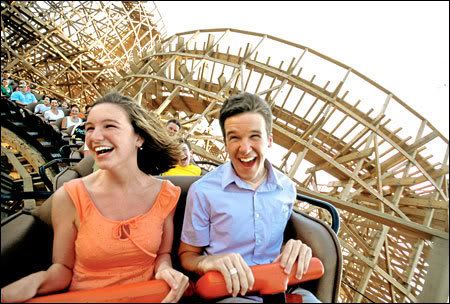
Roller coasters can cause blood clots in the brain
http://www.mercola.com/2000/jan/16/roller_coasters%20_brain_blood_clots.htm
Roller coasters are designed to thrill and scare through an illusion of danger. But physicians in Japan are warning that some roller coasters may be truly dangerous after receiving a fourth report of a person developing blood clots on the brain after riding a tall, high-speed roller coaster. Although it is rare for people to develop subdural hematomas (blood clots on the surface of the brain) after riding roller coasters, it can happen. Giant roller coasters which are higher and faster than typical roller coasters may be more dangerous,
Managers at amusement parks and people who enjoy these rides need to be aware of the potential health risks. A healthy 24-year-old Japanese woman developed subdural hematomas after riding three different roller coasters two times each at a Japanese amusement park. One of these, the Fujiyama, is reportedly the world's highest and fastest roller coaster, with a height of 259 feet and a speed of 81 miles per hour. Subdural hematomas occur when blood vessels close to the surface of the brain rupture, leaking blood between the brain and its protective coverings. Pressure from these bleeds on the brain can lead to symptoms such as headaches, vomiting, confusion and difficulty moving. Trauma, such as a head injury, is a common cause of subdural hematomas, but they can also occur without obvious trauma, such as after a bout of sneezing, coughing, or strain from heavy lifting.
The authors note that the woman, who complained of headaches, did not report banging her head during any roller coaster ride. Physicians first prescribed muscle relaxants to relieve the woman of her headache pain. The headaches persisted, however, and two months later, MRI scans of her head showed that she had subdural hematomas. Surgery was performed and the woman recovered. The woman's subdural hematomas and resulting headaches may have been caused by the up-and-down, back-and-forth motions of the roller coaster or the acceleration force may have been strong enough to rupture veins on the surface of her brain. In the other cases, three men developed blood clots in the brain after riding roller coasters. Brain surgery was required to relieve pressure from the blood clots in two of the men and one of them, a 73-year-old man, died from the subdural hematoma. In all four cases, the researchers ruled out other conditions, such as a blow to the head, strain from heavy lifting or a brain tumor, as a cause of the blood clots. All of the patients had recently ridden roller coasters and researchers believe that the rides may have caused their subdural hematomas. The authors note that subdural hematomas are very rare in healthy young women, and recommend that roller coaster designers and builders be aware of the risk of rides causing subdural hematomas in potential passengers.
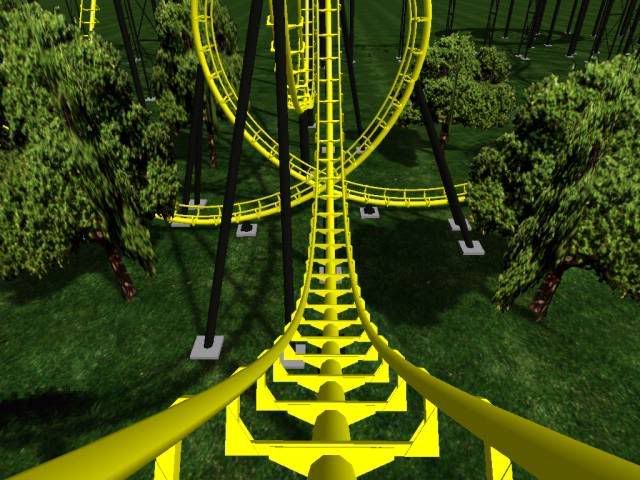
Roller-Coaster Risks Debated
Do Some Rides Pose Life-Threatening Dangers?
http://www.cbsnews.com/stories/2002/06/19/national/main512803.shtml
Roller-coasters are meant for thrills and chills, but as CBS News Correspondent Sandra Hughes reports, some worry there's a real risk.
Theme parks are constantly in search of coasters that accelerate at break-neck speeds while achieving higher highs and deeper dips.
Parks from coast to coast compete to feed the growing appetite for thrills -- this week, Knott's Berry Farm tested "The Accelerator," which blasts from 0-80 mph in two seconds.
Because of rides like "The Accelerator," there are growing fears about health risks associated with roller-coasters. But despite the concerns, ride engineers say they are scary, but still safe.
"The thrill comes from being high above the ground and going fast, and that doesn't necessarily make it any more hazardous," said Chuck Monson, a test engineer.
But it might have been more hazardous for 28-year-old Pearl Santos, who died right after her ride on Magic Mountain's "Goliath" coaster last summer. Santos died of a brain aneurysm she didn't know she had.
"I believe the forces exerted on her body, the lateral forces, caused it to burst," said family spokesman Javier Santos. "That's my personal opinion."
Some new rides can deliver g-forces greater than the space shuttle. Combine that with rapid changes in direction and, "You can end up with tearing of bridging veins and tissues -- similar to what happens in shaken baby syndrome," said Barry Novak, Santos's attorney.
The amusement park industry points out there is no medical proof of a connection. But critics want federal regulation, saying the number of brain injuries over the past decade has increased.
"I have now compiled more than 50 examples of brain injuries, and I'm asking for the federal government to do a comprehensive study," said Rep. Ed Markey, D-Mass.
Bill Powers, an amusement park industry lobbyist, is quick to answer back.
"26,700 children were injured and went to emergency rooms last year due to foot-powered scooters and two died," said Powers. "Why isn't he trying to regulate those?"
For now, only New Jersey is proposing g-force standards. California started requiring parks to report all injuries this year, but some want more.
"You at least have to tell the public that there is an inherent risk that you could suffer a serious injury, even death, by going on the attraction," said Novak.
But how much risk, and who's likely to be injured, is still up in the air.

Roller coaster scare leaves riders hanging
http://www.cnn.com/2007/US/06/10/coaster.scare.ap/index.html
• A dozen riders on a roller coaster spent half an hour hanging upside down
• The ride was 150 feet above the ground
• Officials say a power outage shut down the attraction
HOT SPRINGS, Arkansas (AP) -- A dozen riders on a roller coaster spent half an hour hanging upside down -- 150 feet above the ground -- after a power outage shut down the attraction.
It took about 30 minutes for the city fire department to rescue the riders using a ladder truck Saturday evening, said Aundrea Crary, spokeswoman for the Springs & Crystal Falls amusement park.
Spectators cheered when the riders were brought to the ground from the highest point of a loop on the X-Coaster, but one passenger threw up after reaching safety.
The X-Coaster was one of several rides brought to a halt by the outage that originated somewhere near the park.
"You could tell who got off the (X-Coaster) because their faces were red," said Angela Salter. She was riding the Gauntlet, another coaster, and said park employees worked quickly to free her.
The park resumed normal operations, although the X-Coaster remained closed.
One X-Coaster passenger, Jay Plummer, 37, was taken to St. Joseph Mercy Medical Center in Hot Springs after complaining of neck pain and a headache.
"It was very scary," said his girlfriend, Connie McBride. "I love the amusement park, but I will never get on the X-Coaster again."
The park has experienced outages before, but usually they last only seconds, said Dan Aylward, Magic Springs president and general manager.
Entergy Corp. was investigating but crews found no faulty wiring.
"The cause could be a (tree) limb or as simple as an animal (on the lines)," said Mark Hunt, general manager of customer service for Entergy. "We could find no faults, but we are going to continue to investigate until we find the cause."
Roller Coaster Accident
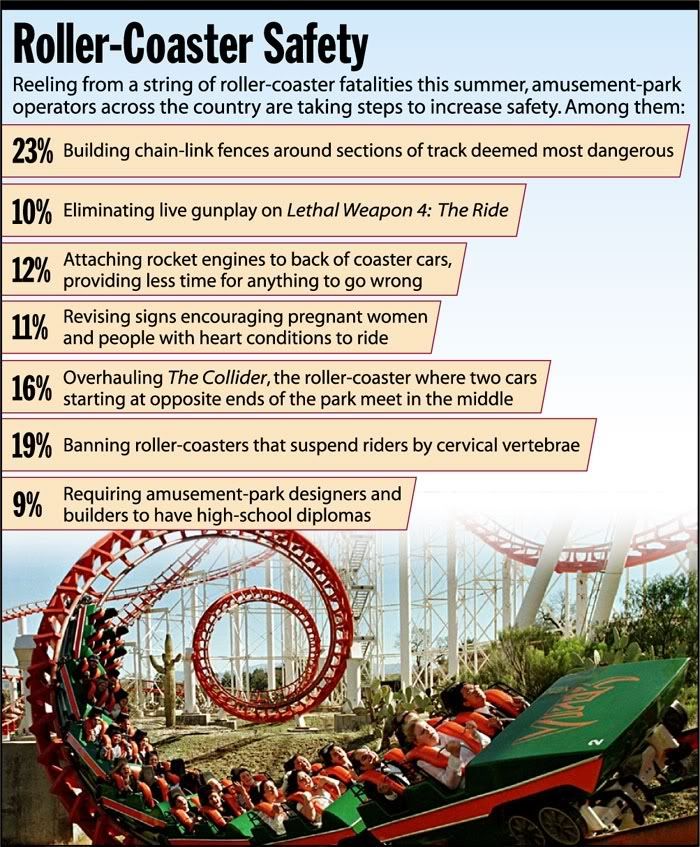
Roller Coaster Safety
http://faculty.sunydutchess.edu/reda/rc%20safety.htm
Statistically, roller coasters are the safest ride in the park. Each day, safety engineers spend hours going over every inch of track, examining each portion for wear and tear, or anything that could indicate a problem. The designers of the roller coaster carefully crafted this thrilling ride to be just that, but you're actually in less danger than you think. You face a greater threat of injury playing sports or riding a bike than you do on a park ride. Amusement park rides use physics laws to simulate danger, while the rides themselves are typically very safe.
According to the International Association of Amusement Parks and Attractions (IAAPA) the odds that you'll be seriously injured on an amusement ride are about one in seven million -- the odds against a fatal injury one in two hundred fifty million. In other words, amusement rides are among the safer recreations you can participate in. Injuries are more common from playing sports, bicycling or horseback riding. You're much, much more likely to be injured in your car driving to the park than riding the thrill rides.
To stay safe on these rides there are things you can do.
Watch the rides in operation
Check your own restraints
Keep hands and arms inside the car at all times
Abide by height restrictions
Respect all other posted ride restrictions
Do not stand up on roller coasters.
Do not rock or shake cars.
Report problems to the park

Theme Park Safety Tips
http://www.themeparkinsider.com/reviews/theme_park_safety_tips/
Almost all theme park accidents can be prevented. Here, based on coverage of theme park safety, are some tips to help you and your family stay safe on your next visit.
Stay Cool, and Don't Get Burned
Heat causes more pain and injury at theme parks than all the world's roller coasters combined. In my experience as a theme park employee and visitor, I've seen more visitors suffer from sunburn, rashes, heat exhaustion and heatstroke than all other injuries put together.
Water's your best friend in helping prevent heat-related illnesses in theme parks. As TPI reader Jason Herrera points out, chugging water in the park won't help as much as getting well hydrated two to three days before your trip. “Many people make the mistake of saying, 'I'll drink plenty of water while I'm at the park.'”
Choose water over juice and soft drinks whenever you get thirsty, and don't drink alcohol until you are done with rides for the day. (Alcohol dehydrates you, leaving you at risk for sunstroke and heat exhaustion. It also impairs your judgment, putting you at greater risk for injury on rides.)
Put on a waterproof sunscreen before you enter the park, and remember to reapply it throughout the day. A soaking sweat, or a couple water rides, can wash that sunscreen off you. A hat or sun visor can help, too.
Wear comfortable shoes and clean, dry socks. The heat reflecting off asphalt pavement can give you a nasty rash if you are wearing sandals or no socks. Plus, you'll be on your feet for much of the day, and will need the extra support from a good pair of shoes.
Use Your Brain
Once you are at the park, don't turn off your brain. Be aware of where you are, and who is around you. Don't stumble into someone else, or worse, trip over some kid's stroller. And if you're the one pushing a stroller, don't crash it into others' legs and feet.
Don't run. And don't stop, either, unless you've looked around to see that you won't block folks walking behind you. If you need to stop, move over to the side, and out of others' way.
Follow Instructions
Know what you're going on, and read the boarding restrictions before you get in line. If you are pregnant, have pain or injuries in your back or neck, or have a heart condition, you will not be able to go on some rides. If you are shorter than five feet, or taller than six, you'll also encounter rides where you will either not be permitted, or won't be comfortable. If you can't find the boarding restrictions at a particular ride, or have any questions about them, find a park employee and ask. Some parks make special seats available on select rides for larger visitors. Ask.
Most parks issue special guidebooks for persons with disabilities, which include restrictions that also affect many kids as well as larger riders. You can always stop by a park's guest relations office, usually located near the front gate, if you still have questions about which rides will be appropriate and comfortable for you and your group.
Don't "cheat" and ignore these rules to get on ride where you don't belong. You might think a ride looks tame enough for you. But sometimes there are potential problems on a ride that most visitors can't see -- a hidden drop or turn, a sudden stop, or a portable ladder that riders will have to descend if the ride shuts down. Don't think that you know more about a ride than the park does. If they tell you not to ride, don't.
And don't even think about cutting in line. Nothing provokes more fights and nasty exchanges in theme parks than impatient folk who won't wait their turn. Paramount's Carowinds employee Matthew Woodall advises, “it's not worth getting thrown out of the park just to save a couple minutes in line.” He also reminds visitors not to take matters into their own hands. “If you happen to witness line-jumping (I have in different parks on many occasions) please report it to the nearest employee at the ride. There is no point in reporting it to the guy sweeping because he likely has no idea what to do. Report it to the employees at the ride, or if possible, a security officer.”
Stay In to Stay Safe
On any theme park ride, keep your rear on the seat, your hands on the grab bar and your feet and knees inside the car.
If there is no grab bar, keep your hands on your lap. If you are riding a "floorless" coaster, relax your legs and let them dangle underneath you. Don't kick them out to the side or front.
If you are on a ride with a lap bar, seat belt or safety harness, make sure that it is in place, snug and locked. If the ride starts to move and your restraint is not in place, immediately yell for help.
Do not get on or off a ride until you've been given the okay by an attendant to do so.
Unfortunately, some theme parks have cut corners on safety, and no longer staff all load and unload positions. If that is the case, wait until a vehicle comes to a still, complete stop before you try to get on or off. Don't crowd others who might be exiting when you are getting on. And make sure that your vehicle has stopped next to the unload platform before you get off. Often, vehicles stop short of the unload platform to wait for groups up ahead to exit.
Ride 'Er Easy, Cowboy
Some rides, especially roller coasters and simulator rides like Disney's Star Tours, can whip your head around, leaving you at risk for headaches as well as more serious head injuries. On those types of rides, sit in the middle of the chair and don't slouch or lean to one side. Relax, but do not go limp. You want to keep your balance in the seat.
When the seat pitches you to the left, relax your torso and bend to the right to keep your head upright and centered. And vice versa. Think of riding a horse, or surfing. You want to ride the seat--not have it throw you around.
Again, if you are prone to headaches, have any neck or back problems, or have been diagnosed with aneurysm, do not get on a roller coaster or simulator ride.
Finish Your Food
Remember the old saw about not going swimming for an hour after eating? Well, you needn't be that extreme, but it should be obvious that you shouldn't get on a coaster or other turbulent ride if you have an upset, or overly stuffed, stomach. So wait a few minutes after eating to make sure everything's sitting right. And throw away that gum before getting on board a theme park ride, too. On a high-speed ride that twists, flips and dips, you don't want anything in your mouth that could block a vital airway.
Help the Kids
If you are visiting with a child, take a moment to explain the ride to them, and tell them how they should behave. They are depending upon you to keep them safe. Set a good example for them by following the rules above, and make sure that they know you expect them to follow those rules, too.
Tell them to stay seated, to hold the grab bar or put their hands in the laps, and not to stick their knees and feet outside a ride vehicle. Make them look to you for the okay to get on or off a ride, too.
And never put a crying child on a ride. If your child starts to cry, let others pass you in line until your child is calmed. Or, gently exit the queue and find something more relaxing to do. Young kids can't keep an adult's pace in a theme park. Let them take plenty of breaks.
“Kids get tired,” said TPI reader Matt Johnson, a father of four. “Tired kids make parents even more tired. And tired kids and parents get hurt -- physically and emotionally.” He advises that parents plan a mid-day break, perhaps a swim back at the hotel, to avoid mid-day heat and crowds. “You will see cranky families having a miserable time while you are refreshed and having a great evening.” -- Last edited by Robert Niles

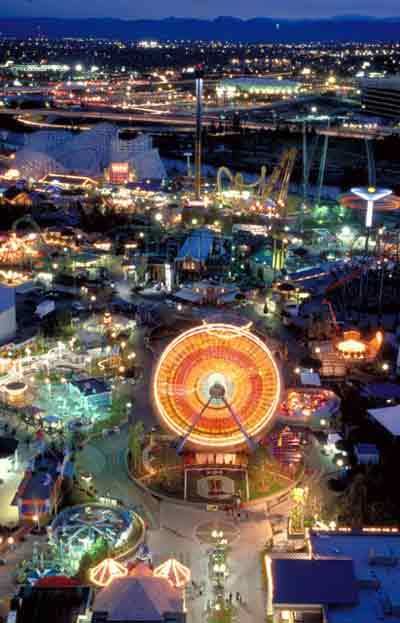
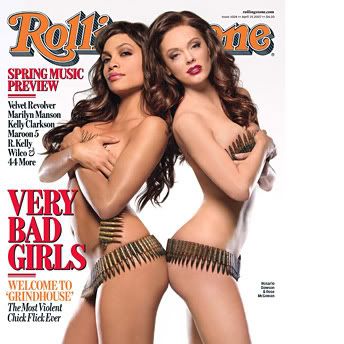











![Brotherhood" (2006) [TV-Series]](http://photos1.blogger.com/x/blogger2/1421/379621144723082/211/z/425926/gse_multipart33129.jpg)







No comments:
Post a Comment